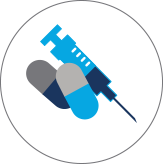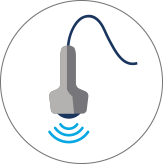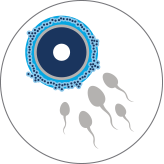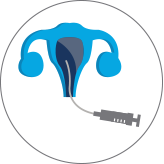IVF Treatment
IVF is a common fertility treatment that increases the chances of conception by fertilising the woman’s eggs with sperm inside the laboratory while replicating the natural processes that take place in the woman’s body. The fertilised eggs are then transferred back to the woman’s womb after five to six days through a specially designed tube called a catheter. This process is known as Embryo Transfer.
Why Do I Need Fertility Treatment?
People may require IVF for various reasons, but it all comes down to a person’s inability to conceive naturally. So, think of it as an assisted-conception technique that bypasses the barriers that hinder the egg and sperm from meeting naturally. Here are some of the reason why you might need treatment:
- Women under 40 years, unable to conceive after 1-2 years of unprotected intercourse
- Women battling with endometriosis, ovulatory disorders or polycystic ovarian syndrome.
- Women whose fallopian tubes are blocked or damaged
- Women with premature ovarian failure
- Women for whom artificial insemination has not worked
- Men with fertility problems such as low sperm count or sperm motility
- Unexplained infertility
- Women suffering with fibroids
There are a number of other factors that could hinder natural conception. So, if you’ve been unable to get pregnant after 6 months of trying naturally, then we recommend booking an appointment with us.
How Long Does It Take?
long-protocol IVF treatment takes about nine weeks, from the initial nurse planning appointment through to the time of pregnancy test. During this period, you’ll make six trips to our clinic. Conversely, short protocol IVF takes about five weeks, during which you’ll make about five trips to our clinic.
(Please note, every person we treat will have different requirements and might take longer than stated above.)
Short and Long Protocol
IVF comes in two forms – long protocol and short protocol. Depending on your particular circumstances your consultant will discuss with you the most appropriate treatment option for you.
The five Steps Of Short Cycle IVF
IVF treatment procedure typically occurs in just six steps, but this might vary slightly depending on your individual requirement. Here’s a breakdown of the process:

1. Hormone Injections
On the second day of your period, you will need to start taking daily injections of the hormones to stimulate your ovaries so you can produce multiple eggs within follicles. You will need to attend at least two to three times over the next two weeks for scans, and maybe blood test, to see how you are responding to the medication. After five days of your treatment, you will need to start the second injections, so you do not release your eggs too soon.

2. Ultrasound Scan
During the course of the drug treatment, your progress will be monitored through ultrasound scans and sometimes, blood tests. At 34-38 hours before egg collection, you will be injected with another hormone called (HCG), which will aid the maturation of your eggs.

3. Egg Collection (Transvaginal Oocyte Recovery)
For this procedure, eggs are collected from follicles on both ovaries through a fine needle attached to the tip of the ultrasound probe. After successful egg collection, you’ll receive an injection, pessaries or gel to prepare your womb for embryo transfer. You may experience some cramps, slight vaginal bleeding or discomfort following this procedure, but it will pass.

4. Egg Fertilisation
Once collected, your eggs are mixed with the sperm received from your partner (or donor) and cultured for 15-20 hours in the laboratory. After this, they are examined to find out whether fertilisation has occurred. Upon successful fertilisation, the embryos continue to develop in the incubator to for up to 5-6 days. The embryos are monitored by an embryologist, who selects the best-performing embryo for the embryo transfer (ET) procedure.

5. Embryo Transfer (ET)
During this procedure, a speculum will be inserted into your vagina in order to keep the vagina open. This action allows the cervix (opening/neck of the uterus) to be visualised. A catheter is then passed usually under ultrasound guidance through the cervix to transfer the selected embryo directly into the womb, this procedure is normally painless.
Our Patients
Say About Us
Samantha and Tom
“He is our miracle baby after our second and final try at IVF cycle. We couldn’t thank OXRM Oxford enough for all their support and guidance throughout our journey”
Gemma and Paul
“Our dream girl has brought so much happiness. OXRM were so friendly, compassionate and medical were perfect, we couldn’t have asked for.”
Why Choose

Families are at the centre of our lives and for many of us there is nothing more important than having a family of our own, however for 1 in 7 of us the dream of becoming parents cannot be realised without specialist support.
Here at Oxford Reproductive Medicine, we understand how confusing and emotional this reality can be, so we combine the highest levels of personalised patient care with access to the country’s premier treatment centres.
We bring premier UK centres in reach of those who want the best treatment. Our team of experts will manage the majority of your treatment at a local centre leaving you to choose which of the UK’s leading clinics you would like to complete the collection and implantation.


